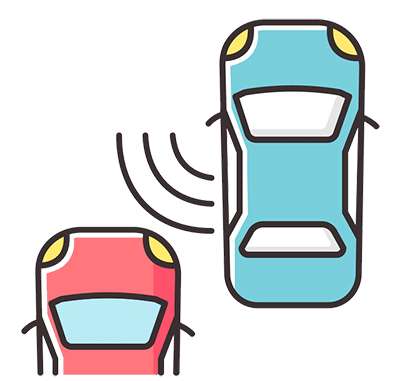Quiz: Find your blind spots
ADVERTISEMENT
Correct!
Wrong!
Correct!
Wrong!
Correct!
Wrong!
Correct!
Wrong!
Correct!
Wrong!
Correct!
Wrong!
Share the quiz to show your results !
Subscribe to see your results
I got %%score%% of %%total%% right
More Learning Options:
Loading…
ADVERTISEMENT
The Importance of Checking Your Blind Spots
Being able to recognize blind spots is an integral part of defensive driving. Checking your blind spots will keep you safe as well as others on the road. Once you are aware of where your blind spots are located, you’ll have a much easier time switching lanes and merging onto the roadway. Let’s take a look at what blind spots are, how to avoid them, how to check for them, and a variety of helpful tips for new drivers.
What is a Blind Spot?
Blind spots are areas on your car that you can not see in your normal field of vision. A blind spot can not be seen in front of you or in your peripheral vision. Blind spots are the most difficult area on your car to detect and they occur in multiple places. They include the following areas.
- Windshield pillar area
- Side-view mirrors
- Interior rear-view mirror
These areas are most likely to cause blind spots, however, cargo and headrests can also obstruct your vision. A blind spot can hide another vehicle, a passenger and objects. It is essential that you know how to detect blind spots for safe driving. Once you are aware of them, it becomes second-nature to check them.
Strategies to Avoid Blind Spots
 Blind spots have to be checked manually when the driver turns their head or glances over their shoulder. On a busy roadway, this may be a risky move. While it may not be possible to reduce all head-turning movements, you can certainly avoid doing it some of the time. The most helpful technique to limit head checking is proper mirror position. When your mirrors are properly positioned, the risk for blind spots is reduced. Make sure your mirrors provide you with a full field of vision. Not only is it important to adjust them horizontally, but vertically as well. This means you want a clear view of what’s on the road, not above or below. Take a look at the following tips for adjusting your mirrors.
Blind spots have to be checked manually when the driver turns their head or glances over their shoulder. On a busy roadway, this may be a risky move. While it may not be possible to reduce all head-turning movements, you can certainly avoid doing it some of the time. The most helpful technique to limit head checking is proper mirror position. When your mirrors are properly positioned, the risk for blind spots is reduced. Make sure your mirrors provide you with a full field of vision. Not only is it important to adjust them horizontally, but vertically as well. This means you want a clear view of what’s on the road, not above or below. Take a look at the following tips for adjusting your mirrors.
- For Rear View: Rear view mirror should give you an entire view.
- For Left Side: Lean to the left, allowing only a little of your vehicle to be seen.
- For Right Side: Lean to the right, allowing only a little of your vehicle to be seen.
When and How to Check
There are times when you absolutely need to check your blind spots such as changing lanes and merging. To begin, flip on your turn signal to alert cars around you that you will be changing lanes. Next, check your mirrors. This includes the rear and side-view mirrors. Next, perform a quick shoulder check to verify the coast is clear. Remember that you need to keep your sterling wheel steady while doing these checks and maneuvers. The last thing you want to do is lose your position and veer out of the lane.
Don’t Rely on Blind Spot Detectors
Most of the new car models come with automatic blind spot detection and lane departure warnings. Systems such as these will detect objects in a car’s blind spot. However, you should not completely rely upon these systems for accuracy. Not only can cars zoom up beside you in a matter of seconds, but it’s also easy for them to be out of your visibility range. Make sure to do your due diligence and use the methods mentioned above for safe driving.
Tips For Safe Driving
- Don’t linger in the blind spot of another car. If your car is not in their field of vision, you won’t want to stay there long. For example, if a driver has their turn signal on, you should not be in their blind spot area. It is a good idea to keep your distance from other cars on a roadway for a variety of reasons.
- A quick shoulder check can save your life and prevent an accident or injury.
- Know where your blind spots are on your specific car (every car is slightly different). Also, be aware of the blind spots on other cars to the best of your ability.
- Make sure your mirrors are well positioned every time you get into the car. Checking these before driving off is proactive road safety.
